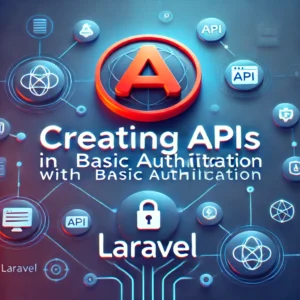In today’s interconnected digital world, the term “API” is frequently mentioned, especially in discussions about software development, mobile apps, and web services. But what exactly is an API, and why is it so crucial to modern technology? This blog aims to demystify APIs, explaining what they are, how they work, and why they are integral to the seamless operation of our favorite apps and services.
What is an API?
API stands for Application Programming Interface. At its core, an API is a set of rules and protocols that allow different software applications to communicate with each other. Think of it as a bridge that enables two software programs to talk to each other and share information or functionalities without having to know the intricate details of each other’s internal workings.
For example, when you use a mobile app to check the weather, that app likely communicates with a weather service’s API. The API takes your request, retrieves the relevant data (like current temperature or forecast), and sends it back to the app, which then displays it to you in a user-friendly format.
How Does an API Work?
APIs work by defining a set of requests that a client (e.g., a web browser or mobile app) can make to a server (e.g., a web service). The server then processes these requests and returns a response, usually in a format like JSON or XML.
Here’s a simple breakdown of how an API works:
- Request: The client sends a request to the server. This request could be asking for data (e.g., “Give me the latest weather data”) or asking the server to perform an action (e.g., “Add this item to my shopping cart”).
- Processing: The server receives the request and processes it. It might retrieve data from a database, perform some calculations, or interact with other systems to fulfill the request.
- Response: Once the processing is complete, the server sends a response back to the client. This response usually contains the requested data or a confirmation that the requested action was completed.
- Action: The client receives the response and uses it to perform an action, like displaying information on the screen or updating the state of the app.
Types of APIs
APIs come in various forms, tailored to different purposes:
- REST (Representational State Transfer) APIs: These are the most common type of APIs used in web services. They operate over HTTP and are designed to be simple, stateless, and scalable.
- SOAP (Simple Object Access Protocol) APIs: SOAP APIs are more complex and designed for enterprise-level services. They use XML for message formatting and have stricter security and transaction rules.
- GraphQL: A more recent API technology, GraphQL allows clients to request specific data they need, reducing the amount of data transferred. It’s highly efficient for modern applications that require complex data queries.
- WebSocket APIs: Unlike REST and SOAP, which are request-response based, WebSocket APIs enable two-way communication between the client and server, making them ideal for real-time applications like chat apps.
- Open APIs (Public APIs): These APIs are publicly available for anyone to use. They are often used by third-party developers to integrate with popular platforms like Twitter, Google Maps, or YouTube.
- Private APIs: These APIs are restricted and only accessible by authorized users within a company. They are used to connect internal systems and services.
Why Are APIs Important?
APIs are the building blocks of modern software development. Here’s why they matter:
- Interoperability: APIs allow different software systems to work together, enabling the integration of services from various platforms.
- Efficiency: By using APIs, developers can reuse existing services and functionalities, speeding up development processes and reducing redundancy.
- Scalability: APIs enable companies to scale their services more easily. For example, a company can create a mobile app that interacts with the same backend services as their website, all through APIs.
- Innovation: APIs foster innovation by allowing developers to build on top of existing platforms. For example, many popular apps, like Instagram or Airbnb, were built by leveraging APIs from other services.
- Security: APIs can provide controlled access to data and services. For instance, a bank might expose an API that allows third-party apps to access account balances, but only with the user’s explicit permission.
Real-World Examples of APIs
- Social Media Integrations: When you see a “Share on Facebook” button on a website, it’s using the Facebook API to post content directly to your feed.
- Payment Gateways: Services like PayPal or Stripe use APIs to allow websites to process payments without handling sensitive financial data directly.
- Weather Apps: Most weather apps retrieve data from a weather service’s API, providing users with up-to-date forecasts and conditions.
- Travel Booking: When you book a flight through a travel aggregator like Expedia, it uses APIs to pull in data from airlines, hotels, and car rental services to provide you with options.
Conclusion
APIs are the unseen heroes of modern software development, enabling the seamless interaction between different applications and services that we rely on every day. Whether it’s checking the weather, making an online payment, or sharing a post on social media, APIs are at the heart of the digital experiences that make our lives easier.
Sure! Here are some practical examples of how APIs are used in everyday applications:
1. Social Media Integration
Example: Posting to Twitter from a Third-Party App
- Scenario: You’re using a third-party app like Buffer to schedule tweets for your Twitter account.
- API Involved: Twitter API.
- How It Works: Buffer sends a POST request to the Twitter API with the content of your tweet and your account credentials. The Twitter API processes the request, posts the tweet on your behalf, and returns a confirmation that the tweet has been successfully posted.
// Example of a POST request to the Twitter API using JavaScript's fetch API
fetch('https://api.twitter.com/2/tweets', {
method: 'POST',
headers: {
'Authorization': 'Bearer YOUR_ACCESS_TOKEN',
'Content-Type': 'application/json'
},
body: JSON.stringify({
text: "Hello World! This is my first tweet using the Twitter API."
})
})
.then(response => response.json())
.then(data => console.log('Tweet posted:', data))
.catch(error => console.error('Error:', error));2. Payment Processing
Example: Processing a Payment with Stripe
- Scenario: You’re running an eCommerce site and need to process payments securely without storing sensitive credit card information on your servers.
- API Involved: Stripe API.
- How It Works: When a customer enters their payment details and submits an order, your website sends the payment information to Stripe via their API. Stripe processes the payment, and the API returns a success or failure message along with transaction details.
// Example of a payment request using Stripe's JavaScript library
const stripe = Stripe('your-publishable-key');
stripe.redirectToCheckout({
lineItems: [{ price: 'price_1GqIC8AHEBnlfyP1vsvA5KrG', quantity: 1 }],
mode: 'payment',
successUrl: 'https://yourdomain.com/success',
cancelUrl: 'https://yourdomain.com/cancel',
})
.then(result => {
if (result.error) {
// Display error message
console.error('Error:', result.error.message);
}
});3. Weather Data Retrieval
Example: Getting Weather Data for a Location
- Scenario: You have a mobile app that displays the current weather conditions for a user’s location.
- API Involved: OpenWeatherMap API.
- How It Works: When the user opens the app, it fetches the current weather data for the user’s location from the OpenWeatherMap API and displays it in the app.
// Example of fetching weather data using OpenWeatherMap API
fetch('https://api.openweathermap.org/data/2.5/weather?q=London&appid=your_api_key')
.then(response => response.json())
.then(data => {
console.log(`Temperature in ${data.name}: ${data.main.temp}K`);
})
.catch(error => console.error('Error:', error));4. Travel Booking
Example: Booking a Flight through a Travel Aggregator
- Scenario: You’re using a travel booking site like Expedia to find and book a flight.
- APIs Involved: Multiple APIs from different airlines.
- How It Works: Expedia uses APIs from various airlines to search for available flights that match your criteria (dates, destination, etc.). When you book a flight, Expedia uses the airline’s API to make the reservation and confirm your booking.
// Hypothetical example of a GET request to fetch available flights
fetch('https://api.exampleairline.com/v1/flights?origin=LAX&destination=JFK&date=2023-08-20')
.then(response => response.json())
.then(data => {
console.log('Available flights:', data.flights);
})
.catch(error => console.error('Error:', error));5. Google Maps Integration
Example: Embedding a Google Map in Your Website
- Scenario: You want to display a map on your website showing your business location.
- API Involved: Google Maps API.
- How It Works: You use the Google Maps API to embed a map on your website, centered on your business’s location. You can customize the map’s appearance and functionality, such as adding markers, setting zoom levels, and more.
<!-- Example of embedding a Google Map using the Google Maps API -->
<!DOCTYPE html>
<html>
<head>
<title>My Business Location</title>
<script src="https://maps.googleapis.com/maps/api/js?key=YOUR_API_KEY"></script>
<script>
function initMap() {
var location = { lat: -25.344, lng: 131.036 };
var map = new google.maps.Map(document.getElementById('map'), {
zoom: 10,
center: location
});
var marker = new google.maps.Marker({
position: location,
map: map
});
}
</script>
</head>
<body onload="initMap()">
<h3>Our Location</h3>
<div id="map" style="height: 500px; width: 100%;"></div>
</body>
</html>Conclusion
These examples illustrate how APIs enable different software systems to communicate and work together seamlessly. Whether it’s posting on social media, processing payments, retrieving weather data, booking flights, or embedding maps, APIs play a crucial role in delivering the functionality we’ve come to expect from modern applications. By understanding and leveraging APIs, developers can create more efficient, scalable, and innovative solutions.






